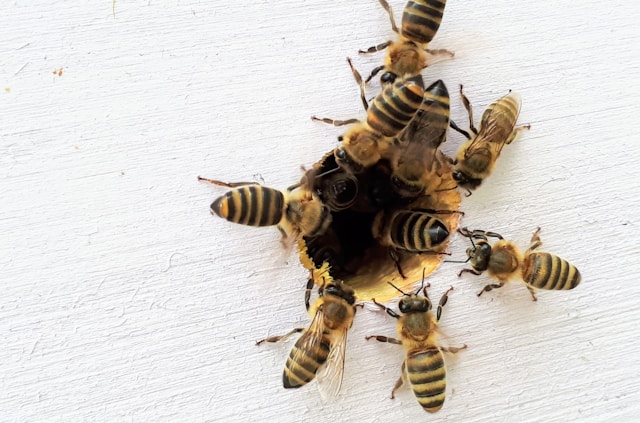Introduction
Beekeeping is more than just managing hives and harvesting honey; it is an intricate dance with nature, requiring a deep understanding of bee behavior. Bees are fascinating creatures with complex social structures and communication systems. By learning about these behaviors, beekeepers can create a thriving environment for their colonies and improve their beekeeping practices. This comprehensive guide delves into the intricacies of bee behavior and its critical role in successful beekeeping.
The Social Structure of a Bee Colony
A bee colony is a superorganism with a highly organized social structure. Understanding the roles and interactions within this structure is fundamental to beekeeping.
- The Queen Bee: The heart of the hive, the queen bee’s primary function is to lay eggs. She can lay up to 2,000 eggs per day during peak season. The queen also produces pheromones that regulate the behavior of other bees in the colony;
- Worker Bees: Female bees that do not reproduce, worker bees perform all the tasks necessary for the colony’s survival. Their duties change as they age, progressing from cleaning and feeding larvae to foraging for nectar and pollen;
- Drone Bees: Male bees whose sole purpose is to mate with a queen. Drones do not have stingers and do not participate in the day-to-day operations of the hive. After mating, drones die, and those that do not mate are expelled from the hive before winter.
Bee Communication
Effective communication is vital for the functioning of a bee colony. Bees use several methods to convey information:
- Pheromones: Chemical signals that influence the behavior of other bees. The queen’s pheromones, for example, help maintain colony cohesion and signal her presence. Alarm pheromones alert the colony to danger, triggering defensive behavior;
- The Waggle Dance: A sophisticated method of communication where foraging bees inform others about the location of food sources. The dance’s duration and direction indicate the distance and direction of the nectar or pollen;
- Vibrations and Sounds: Bees use vibrations and sounds to communicate various messages, such as signaling the need for more foragers or informing the colony of the queen’s health and presence.
Foraging Behavior
Foraging is a critical activity for the survival of the colony, involving the collection of nectar, pollen, water, and propolis.
- Nectar and Pollen Collection: Foragers collect nectar and pollen from flowers. Nectar is converted into honey, while pollen provides essential proteins and lipids for brood development;
- Water Collection: Water is crucial for cooling the hive and diluting honey. Foragers collect water and distribute it within the hive through trophallaxis, where bees share liquid food;
- Propolis Collection: Propolis, a resinous substance collected from tree buds, is used to seal cracks and protect the hive from pathogens.
Hive Dynamics and Environmental Impact
Bee behavior is profoundly influenced by environmental factors, which beekeepers must monitor and manage:
- Temperature Regulation: Bees maintain a constant hive temperature, crucial for brood development. In cold weather, they cluster together to generate heat, while in hot weather, they ventilate the hive using their wings;
- Seasonal Changes: Bee behavior changes with the seasons. In spring and summer, activity levels are high, with a focus on foraging and brood rearing. In autumn, bees prepare for winter by storing honey and reducing brood production;
- Swarming: Swarming is a natural reproduction process where the colony divides, and a group of bees leaves with a new queen to form a new colony. Understanding the signs of swarming and managing it can help prevent the loss of bees and maintain hive strength.
The Role of Beekeepers
Beekeepers play a pivotal role in managing bee behavior and ensuring the health and productivity of their colonies. Here are some key practices:
- Regular Inspections: Frequent hive inspections help monitor the colony’s health, identify signs of disease or pests, and ensure the queen is present and laying eggs;
- Pest and Disease Management: Keeping an eye out for common threats like Varroa mites, American Foulbrood, and Nosema is crucial. Early detection and treatment can save the colony from significant harm;
- Providing Adequate Resources: Ensuring that bees have access to enough food, especially during dearth periods, is essential. Supplemental feeding and providing clean water sources can help maintain colony health;
- Managing Hive Environment: Proper hive placement and maintenance can mitigate environmental stressors. Providing shade, windbreaks, and adequate ventilation can significantly impact colony well-being.
Conclusion
Understanding bee behavior is the cornerstone of successful beekeeping. By learning how bees communicate, forage, and respond to environmental changes, beekeepers can create optimal conditions for their colonies to thrive. This knowledge not only enhances honey production and hive health but also contributes to the broader efforts of conserving these vital pollinators. Embrace the fascinating world of bees, and let their behavior guide you to become a more effective and mindful beekeeper.
